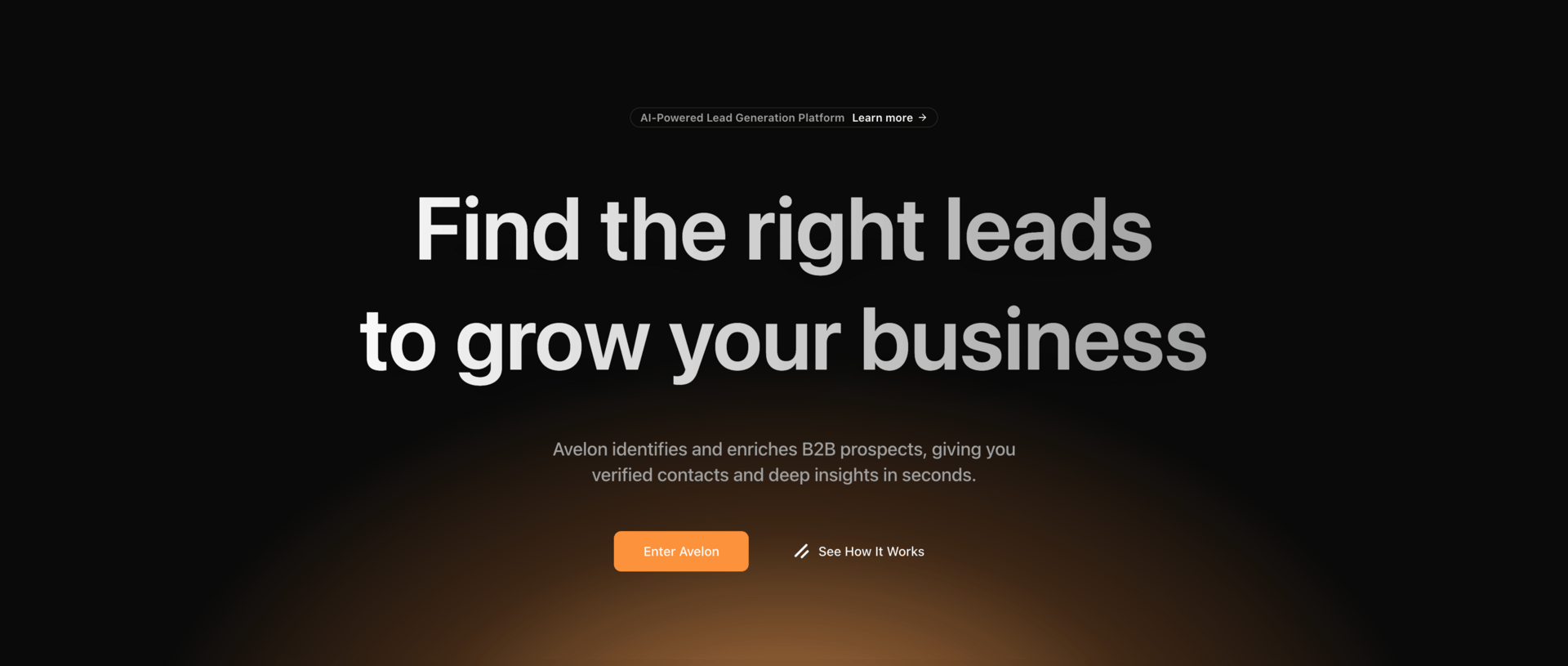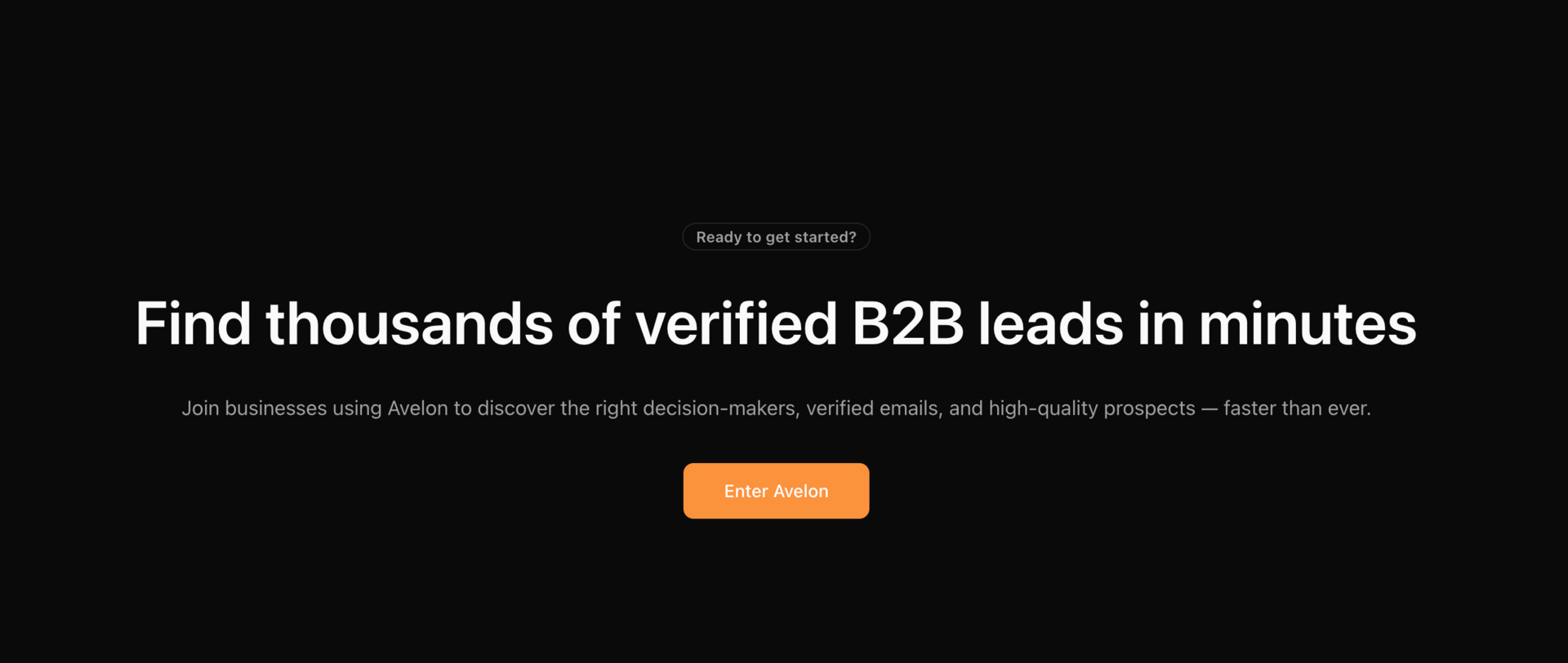- Vibe Code Lab
- Posts
- well... another startup
well... another startup
Hey friend,
So… one month ago, I left my 9-to-5 and decided to fully commit to building on my own. I launched a startup, got accepted into an accelerator in London and Berlin, and just shipped my second one called Avelon (use code Vibe-Code-Lab for 50% off). Just me trying to turn ideas into useful tools.
Since then, I’ve launched two small projects. The first was Polary, an AI co-founder that helps validate and structure startup ideas. I built the MVP in a week, launched it on Reddit (got 200k+ views), and shared what I learned along the way. It picked up some traction: ~500 users, and >$100 MRR. Nothing crazy, but enough to keep going and iterate.
I shared how I built it, what I used, where I failed. Then, the week after, I wrote another issue with updated stats, honest breakdowns, and more thoughts. And now, here we are — another week, another build. But this time, it’s startup number two.
Let’s start with Avelon, the second startup I’m launching since I left my full-time job. You’ll get what it does in a moment, but I want you to understand why it even exists.
Find the right leads to grow your business
Now I want to show you Avelon. It wasn’t planned as a startup. It started as a local automation hack. We were working on multiple projects and constantly needed high-quality leads. So we built something. Something that could find thousands of leads in minutes, but with depth — not just scraped emails. We’re talking real context. So when you reach out, it’s not cold. It’s warm. Personal. Targeted.
The conversion rate? Insane compared to any tool we used before.
We were using it for a few different projects — a medical AI company a friend is building, the podcast I co-produce, and some general outreach for ideas I’m still working on.
Here’s how it works:
You describe the people you want to reach (e.g. “health tech investors in Europe,” “B2B SaaS heads of growth,” “female founders in NYC”).
It searches across the web and builds a lead list for you — fast.
But instead of just giving you names and emails, it finds context: what they do, what they care about, what they’ve shared.
Each lead includes custom fields — LinkedIn, socials, niche details — so your outreach isn’t generic.
It’s built to turn cold emails into warm intros, at scale.
Let me share a few use cases so you get the picture:
One of our projects is in AI-medtech. We needed to reach out to doctors across specific regions and specialties. With Avelon, we outlined the types of doctors we needed, the locations, and the specific custom fields we were looking for. Pressed generate. Within minutes, we had thousands of qualified leads and started outreach. Worked like a charm.
Another example is our podcast. If you’ve been following, you know we’ve launched seven episodes and already pre-recorded 20 more. Most of our guests now are super high-profile — psychology, medicine, productivity — all real experts. Reaching out to them before would take weeks. Now, with Avelon, we find specific insights about each guest so our messages land. Warm, tailored, and fast.
So now, we’re opening it up to others who might need the same thing (and if that’s you, use promo code Vibe-Code-Lab for 50% off the first month).
If you work on sales, partnerships, podcasting, fundraising, or any kind of outreach, Avelon might help. It doesn’t just give you emails — it gives you a better understanding of the people you want to talk to.
It’s not just a lead scraper. It’s a lead researcher. It gives you both the who and the why. You tell it the type of people you’re looking for, and it returns structured, deeply enriched leads — not just cold names on a list.
The approach of building something to solve my own bottlenecks, then sharing it feels right. It’s also the only way I know how to work right now. I’m keeping everything small and focused. Just trying to build useful things and keep learning.
How we built it
We’re building it using LangGraph and LangSmith, and it’s also where I’m currently focusing my energy — going deeper into AI agents, prompt engineering, and operational intelligence. I used LangChain first in my previous startup (Polary), then switched to LangGraph for better flow control, and now combining both with LangSmith for this new stack. It’s a whole new layer, and honestly, I love where it’s going.
Frontend and backend are no longer the hard part. Landing pages are easy. Auth and infra are easy. The real edge now is building the logic inside the agent, the workflows, the memory, the intelligence.
A few of you have asked about guides, especially around LangGraph and agent design. I haven’t had time to write them yet, but I’m hoping to share something soon.
Personal updates
Right now, I’m in that mode where I’m just shooting my shots. And since I can design, build, ship, and promote everything, I don’t have to wait on anything. I’m not just a full-stack developer anymore. I’m in a way, a full-stack founder. I can move ideas from zero to market in days.
And that’s the game now. It’s not about building some perfect thing. It’s about building fast, getting feedback, and figuring out if it’s worth continuing. That’s what I did with my first startup — I got users, got data, and now I can actually make informed decisions. Should I keep paying for infra? Should I keep building? Should I pivot?
Also, a few weeks ago, I applied to a few early-stage programs with Polary — including Entrepreneur First and Antler. I’ve already been accepted to EF in London and to Antler in Berlin, but I’m still thinking things through and weighing whether it’s the right move. Will share more once I know where it’s heading.
That’s the beauty of how fast things can go when you’re not stuck.
stay caffeinated.
lead the machine.
launch anyway.
— Miron
P.S. If you were waiting for a sign to start, this is it. Build the dumb version this weekend, push it somewhere people gather, and learn in public. The feedback shows up faster than you think

